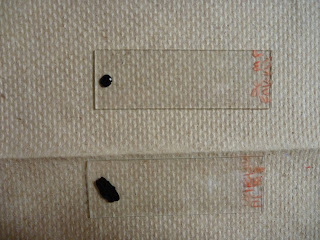EMB Agar
Mannitol Salt Agar
MacConkey
RESULTS:
EMB: Dark purple, green metallic sheen Mannitol Salt Agar: Mannitol non-fermenter
MacConkey Agar: Lactose-fermenter
EMB
Purpose:
To isolate and differentiate gram-negative enteric bacilli Materials:
EMB agar plate
Unknown "K" bacteria
Procedure:
Label EMB plate correctly. (See previous blogs)Use aseptice technique to inoculate the EMB agar plate as a streak plate.
Incubate the inoculated plate upside-sown for 48 hours at 37 degrees C.
See results
 |
| Notice the green metallic sheen. |
Purpose:
To isolate bacteria base don their salt tolerance and differentiate among these isolates for mannitol fermentation. Materials:
Mannitol salt agar plateUnknown "K" bacteria
Procedure:
Label Mannitol plate correctly. (See previous blogs)Use aseptice technique to inoculate the Mannitol agar plate as a streak plate.
Incubate the inoculated plate upside-sown for 48 hours at 37 degrees C.
Look at Results
 |
| Mannitol non-fermenter. Note, my bacteria is on the right side and it did not grow. |
MacConkey Agar
Purpose:
To detect and differentiate among gram-negative enteric bacilli, based on their ability to grow on the medium and to ferment lactose. Materials:
MacConkey agar plate
Unknown "K" bacteria
Procedure:
Label MacConkey plate correctly. (See previous blogs)Use aseptice technique to inoculate the MacConkey agar plate as a streak plate.
Incubate the inoculated plate upside-sown for 48 hours at 37 degrees C.
See results
 |
| Notice the bubbles coming from the bacteria. This occurred after applying Hydrogen Peroxide to the bacteria. This again proves that my bacteria is filtrated. |
 |
| Lactose-fermenter |
























